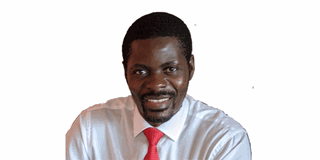Prime
Can the FDC survive?

Author: Moses Khisa. PHOTO/FILE
What you need to know:
The FDC faces a deep crisis, split right in the middle, staring at possible total disintegration.
Until two years ago, for what it was worth, the Forum for Democratic Change (FDC) was Uganda’s main Opposition party, holding forte since political parties were legally allowed to operate nation-wide after a 2005 constitutional amendment. FDC is now in turmoil. From 1986 to 2005, political parties were restricted to their national headquarters, expressly prohibited from most activities, including sponsoring candidates in elections. While not totally banned, they were effectively outlawed, first by fiat of Legal Notice One of 1986, and later through a constitutional provision in 1995, which purported to inaugurate an alternative system of government called the ‘Movement’.
ALSO READ: FDC nominations go ahead at Najjanankumbi
ALSO READ: Coup at FDC?
The Constitution provided that once the ‘Movement’ system was in operation, political parties would be in ‘abeyance’. On paper, the idea of a ‘Movement’, characterised by individual-merit and multi-ideological, appeared novel and enticing. It appealed to Ugandans who had experienced ugly partisan competition, especially with egregious sectarian trappings associated with the Uganda Peoples Congress (UPC) and the Democratic Party (DP).
In practice, however, the ‘Movement’ system was deceptive and patently fraudulent. It was a political organisation that took over the state and outlawed potential opponents. After five years, in 2000, a referendum was held supposedly to renew the ‘Movement’ system, but it was heavily boycotted. Pro-multiparty activists and leaders of parties made a compelling argument that a fundamental right to associate cannot be subjected to a plebiscite, and for Ugandans to belong to political parties couldn’t be a matter of popular opinion.
Worse, the manner in which the law governing the referendum was passed in parliament was irregular, thus the referendum itself was null and void. This was the finding of the Constitutional Court in a landmark ruling which got President Museveni extremely angry and promised to sort the judiciary/judges. In any event, with mounting internal and external pressure, Museveni grudgingly if tactically acquiesced to reopening the political space and switching to party politics. In an act of sheer political deception, what all along was touted as a system called ‘Movement’ overnight became the NRM party! The NRM was the Movement, the Movement was NRM. In fact, to date, Museveni and others still use the two interchangeably.
ALSO READ: I’m ready to challenge Besigye, says Amuriat
At the outset in 2005, NRM apparatchiks toyed with the idea of calling it the ‘National Resistance Movement Organisation’ (NRMO) to differentiate it from the NRM/Movement system. This though, was quickly abandoned because it paid to stick with NRM, a name people knew. In effect, the NRM meant the government and the state of Uganda. So, from the start in 2005, the state of Uganda was presented as the NRM party, and a bunch of Opposition parties purporting to compete for power against the state! The FDC was founded in those circumstances of competing against the state under the personal control of Mr Museveni.
Some key founders of FDC had been part of the NRM, but a good many others had either not been associated with any pre-existing party or belonged to the two main traditional parties, the DP and UPC. In a sense, FDC was a hotchpotch, but one that brought excitement and optimism of turning the corner on a path to progressive politics of healthy competition and open contestation for public office. It was never to be.
ALSO READ: Police barking up the wrong tree inside FDC
ALSO READ: Defiance, greed & grievances in FDC
Uganda’s supposed re-embrace of party politics in 2005 did not quite take off because the incumbent president and party maintained a hostile attitude against pluralism, believing that organised Opposition had to be fought with state force and finance.
This has been the fate of FDC, DP and UPC. The same applies to the newest kid on the block, the National Unity Platform that emerged rather expectedly to displace the FDC as the main Opposition party in parliament in 2021.
The FDC faces a deep crisis, split right in the middle, staring at possible total disintegration. Not surprisingly, the source of the fallout is traced to State House and the classic Museveni politics of infiltration, divide, demobilise and conquer.
Rather strangely though, the storm blasting the FDC pits individuals previously seen as belonging to one faction allied to founding president, Dr Kizza Besigye, against Mr Mugisha Muntu, who unsuccessfully challenged the former for the party’s leadership but later took the helm after Besigye stepped down in 2012.
Muntu served one term as party president, 2012-2017, lost the race for re-election to Patrick Amuriat, then viewed as a Besigye protégé but now in an ugly fallout with Besigye and others. Amuriat’s election in 2017 and Muntu’s loss was highly acrimonious, fractured the party and ultimately saw Muntu leave in 2018 to form a new party. I argued then that Muntu’s move was wrong, and I still believe so. His departure neither helped FDC (now in a severe crisis) nor him, not even the country. His departure weakened FDC to the benefit of Museveni. It all goes to show the hollow promise of party politics under an autocratic system underpinned by military might. Can the FDC survive the current storm? Highly unlikely. But I will return to this question next.




